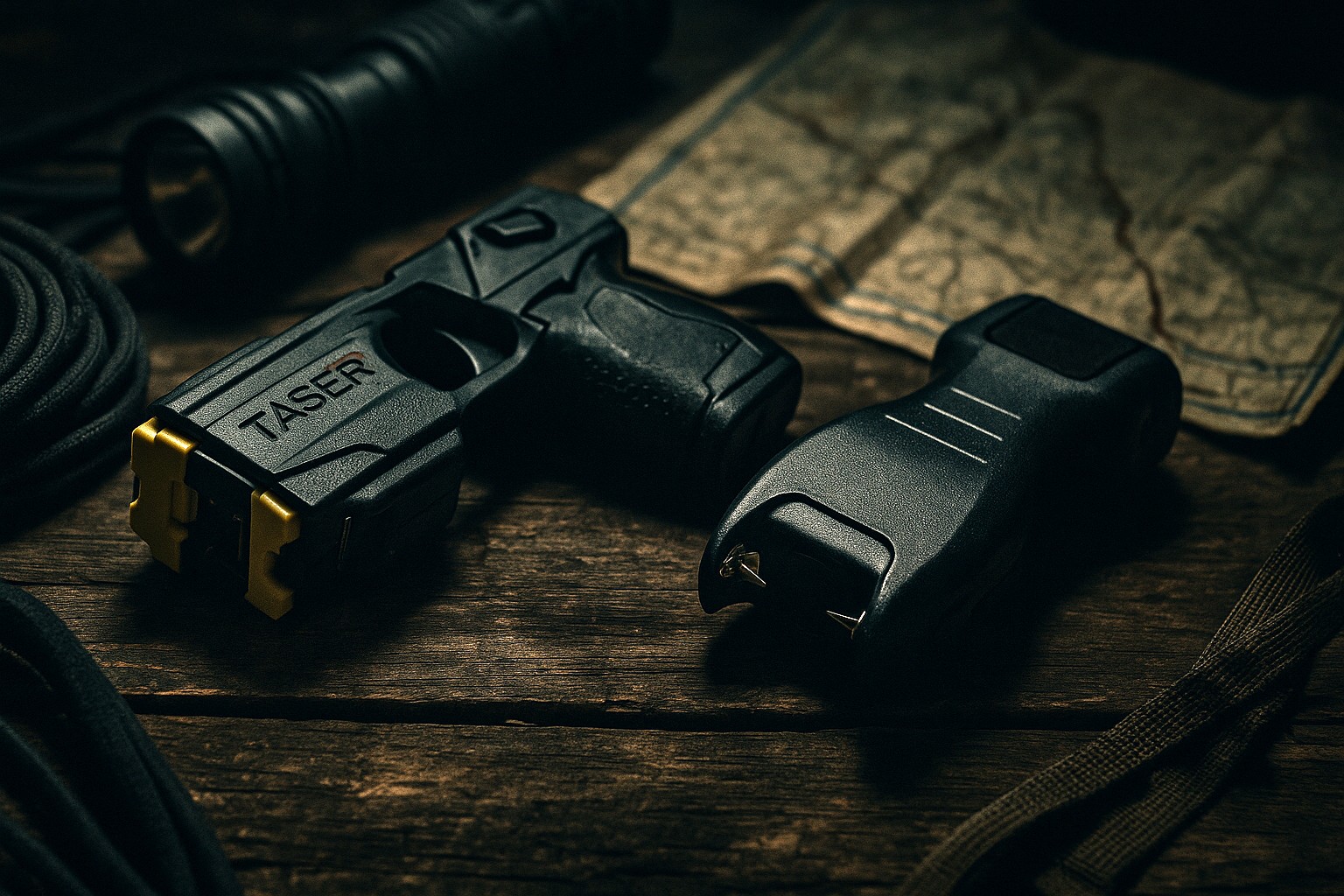Best Oil Lamps and Lamp Fuel

Oil lamps have been around for thousands of years, and they haven’t completely given way to modern lighting technology. They’re low-tech appeal can bring ambiance to a table or provide lighting through power outages and emergencies. There is a range of sizes, brands, and features to consider when you’re looking for the best oil lamp.
This is where we come in. I’ve tested a variety of oil lamps, compared them, and now the results are in: the overall best, an indoor option, and a premium pick for some serious light output. If you want ambient lighting that isn’t reliant on technology, one of these picks will keep you out of the dark.
Contents (Jump to a Section)

Best Oil Lamp
Portable, Effective, and Inexpensive
This simple lamp has convenient features in a compact, portable size, making it versatile.
*Price at time of publishing; check for price changes or sales.
This Lamplight oil lamp is the highest-quality option out of all the less expensive options, still including many convenient features like the globe-lifting handle for wick access and a sturdy, durable frame.
Specs
- Capacity: 5 fl. oz.
- Materials: Painted steel, glass globe
- Wick Size: 3/8″
- Measured Output: 29 Lux (at 1′)
- Runtime: 15 hours
- Size: 4.5″ x 4.5″ x 10″ H
- Weight: 11.8 ounces
You don’t want oil leaking out of your lantern, and unlike many other cheap oil lamps, the Lamplight keeps the oil inside. The reservoir doesn’t leak, and the fill cap has a small gasket on the end to prevent tipping issues. The globe lifting latch is easy to use and lifts the globe plenty high to light and replace the wick as needed. The wick height-adjustment knob isn’t anything special, but it works fine to position the wick and the flame where you need them.
The quality isn’t premium-level, like Dietz or the German-made Feuerhand, but you shouldn’t expect that at this price. I’m happy that the lamp doesn’t leak like many of its competitors, and that it withstands moderate outdoor abuse. The fill line sticker is a bit of an eyesore and comes off over time- it would be nice if that were stamped like the other wording on the reservoir.
In my testing, the glass globe held up fine, and painted steel performed as expected. It does have a lower oil capacity than many other lamps, at just 5 ounces to the fill line, but it can still burn overnight with a 15-hour runtime.
For a versatile but simple oil lantern, get a Lamplight Original Lantern.




Indoor Oil Lamp
Chamber Oil Lamp
Inexpensive, Tip-Resistant, and Easy to Use
This lamp does double duty as a nostalgic statement piece or an emergency indoor light source.
*Price at time of publishing; check for price changes or sales.
Indoor oil lamps are great for disaster lighting, power outages, or just ambiance. This chamber oil lamp edges out others by having a sturdier base, a simple design, and good value for the price.
Specs
- Capacity: 10 fl. oz.
- Materials: All glass with metal lamp head
- Wick Size: 3/8″
- Measured Output: 27 Lux (at 1′)
- Runtime: 25 hours
- Size: 3.5″ x 3.5″ x 11″ H
- Weight: 18 ounces
I found that the glass chimney pops off and on easily, allowing for quick lighting and easy chimney cleaning if you get any soot on it. The burner is intuitive to use- the wick adjusts with the knob and is easy to replace. It threads onto the base sturdily and securely. I especially liked how the base design flanges out, giving the lamp a low center of gravity to prevent tipping, even when it is close to empty.
The lamp doesn’t put out as much light as some of the other indoor lamps, especially older models. It is limited by the chimney height and shape, as well as the 3/8″ wick. The smaller wick does let the lamp run quite a long time with its 10-ounce reservoir (over a day), and the light output is plenty for lighting rooms at night or reading if you get close to the lamp.
If you want an indoor oil lamp that is safe and easy to use, get a Chamber Oil Lamp.




Upgrade Oil Lantern
Dietz #80 Hurricane Lantern
Bright-Burning, High-Capacity, and Durable
This large, quality-made lantern is meant to handle any disaster, whether it’s a hurricane or a blizzard.
*Price at time of publishing; check for price changes or sales.
Also available to buy at Walmart.
Dietz ships out the more affordable premium hurricane oil lamps, competing mostly with the higher-cost Feuerhand. Dietz also has a huge variety. Out of the options, the #80 size is a beast that can put out some serious light for a long time to weather disasters and emergencies.
Specs
- Capacity: 31 fl. oz.
- Materials: Powder-coated steel, glass globe
- Wick Size: 7/8″
- Measured Output: 91 Lux (at 1′)
- Runtime: 26 hours
- Size: 8.5″ x 8.5″ x 14.75″ H
- Weight: 33 ounces
I immediately noticed how the Dietz #80 towers over the other hurricane oil lamps. It’s about 50% taller than the others, twice the weight, and has the largest oil capacity of all the models I tested. It also has a wide 7/8″ wick that puts the light output towards the top of the charts.
It is intuitive to use: there is a fill cap with a gasket to prevent leaks where you add the fuel. Then you lift the globe with a lever to reach the wick with a match, lighter, etc. Release the lever and adjust the wick height to where you want it, and you’re good to go.
One downside I found was that the lantern is so big that it doesn’t fit sometimes where you need it, and that it can get heavy to lug for any distance. It didn’t fit in my light trap that I usually use to measure lux, and adding fuel to the lantern makes it weigh closer to 5 pounds. As long as you know this ahead of time, it’s not necessarily a big drawback.
If you want a big light source that doesn’t rely on technology, get a Dietz #80 Blizzard Hurricane Lantern.


Comparison Table
| Oil Lamp | Pick | Price* | Capacity | Weight | Best Feature |
|---|---|---|---|---|---|
| Lamplight Original | Best Overall | $12 | 5 oz | 11.8 oz | Value |
| Chamber Oil Lamp | Indoor | $15 | 10 oz | 18 oz | Stable base |
| Dietz #80 Blizzard | Upgrade | $44 | 31 oz | 33 oz | High capacity |
| Ochine Lantern | $10 | 5 oz | 9.6 oz | Inexpensive | |
| Stansport 8″ | $11 | 5 oz | 8 oz | Inexpensive | |
| Stansport 12″ | $13 | 12 oz | 14.4 oz | Lightweight | |
| Dietz #20 Junior | $29 | 9 oz | 19 oz | Wide wick | |
| Dietz #76 Original | $30 | 11 oz | 20 oz | Proven performance | |
| V&O 310 | $37 | 11 oz | 33 oz | Attractive trim | |
| Feuerhand Baby Special 276 | $50 | 11.5 oz | 20 oz | High-Quality |
How I Tested the Lamps
My research narrowed the field to several oil lamp brands that I tested: Lamplight, Stansport, Dietz, Feuerhand, and more.
You can see the full list of review criteria below in the What to Look For section, with an explanation for each.
First, I compared the manufacturing specs and checked for frequent issues in reviews. Some lamps, like the Stansports, look good on paper but have the major drawback of frequently leaking.
After comparing the numbers, I got to the nitty-gritty of testing the lamps. I tested their light output with a light meter, measured their oil capacity with a measuring cup, weighed them on a scale, and took them apart to examine quality. Plus, I used them as a light source both inside and outside to see how practical and easy to use each of them is.
I’m always looking for new and better emergency gear, so if you have an oil lantern that performs well for you, let me know in the comments. We review most of our tested reviews annually, so I can always get it in the next roundup and see if it will beat out our top picks.
About the Tester


Hi, I’m Sean, and I’m the founder of TruePrepper. I’ve been reviewing survival lanterns for a while now, but this is my first big foray into oil lanterns. They offer reliable emergency lighting that doesn’t rely on technology to work.
My industrial engineering degree came in handy as I popped them apart to check out how they were made. I also field-tested them in the woods (kerosene, citronella oil) and on the kitchen table (lamp oil).
I broke out the light meter, scale, and measuring cup for testing, so I could put hard numbers on the performance levels of the various lanterns. Some people may think this is overkill, but I prefer to pair practical testing with measured data whenever I can.
What to Look For
The best oil lamps have several important features to look for:
- Value
- Light Output
- Capacity
- Quality
- Size & Weight
The right lantern can light your way outdoors or around the house in an emergency or just with a nice ambiance. Below, I break down how each point matters for the lamps that outperform the rest.
Value: Cost vs. Benefit
The amount of money you spend on something like an oil lamp shouldn’t blow out your entire budget. They aren’t essential for survival, and there are alternatives for lighting, ranging from LED flashlights to small fires.
Still, it’s nice to have on hand for emergencies, but you don’t want to get the wrong thing. There is a wide range of prices on oil lanterns, so it’s possible to overspend or buy a lantern that is so cheap that it leaks.
Light Output
I used my trusty light meter to measure the light output beyond my naked eye. Maximizing the flame (without contacting glass or metal), I measured the output of each lantern in lux from a 1-foot distance in my dark workshop. If you are familiar with my light reviews, you may notice I typically use a light trap with the meter, but the Dietz lantern was too large to fit in the trap. This workaround ensured I still had parity in comparing these lanterns, but made my lux measurements not comparable to the other lighting equipment I’ve measured inside the trap.


The main contributing factors to the brightness of the lanterns included wick size, the type of fuel used, and how high I could turn the flame (usually based on lantern height).
Wick Size
Wider wicks resulted in a brighter flame with a very high correlation. A 1″ wick is almost twice as bright as a 1/2″ wick. This makes sense because it’s wicking up approximately twice the oil.
Fuel Types
The fuel type had an effect on brightness, but not at a significant level. Kerosene burned the brightest, followed by paraffin lamp oil, and then citronella oil. I did not measure any vegetable oils in the lamps.
For simplicity, I listed only the light output measurements from the paraffin lamp oil.
Capacity
The amount of oil a lamp holds is the main consideration in how long it can output light. Wicks are consumed very slowly when lanterns are used properly, so oil is the limiting factor.
To verify listed capacities by manufacturers, I simply filled the reservoirs 80% (or to their listed fill point) and dumped them into a measuring cup. Not a fancy test, but it was effective, and most measurements matched the listed capacities closely.


Quality
To check quality, I closely inspected the lanterns. I’m an industrial engineer, so I like taking things apart and have worked in quality control for over a decade. I took the lanterns apart, checked the welds, stamps, crimps, and glass globe thickness. Most oil lamps are pretty simple and rugged, so I quickly moved on to practical testing, which helped me identify durability issues and leaks.
Durability
For durability, I just used the lamps for several months, as they were designed to be used. I used all but the indoor lamps outdoors on my deck, in the woods on hikes, and even in the rain. The indoor lamps stayed inside on my side tables, mantle, and kitchen table.
When I discovered the leaking lanterns, I emptied them, cleaned up, and quickly disqualified them. I did not conduct any destructive testing (like drop testing) because every lantern I tested had glass parts. Still, the top pick and upgrade pick took a couple of bumps here and there in the woods, fended off some branches, and survived some tip-overs, proving the effectiveness of their glass guards.
Leaks
Unfortunately, some oil lamps are made ‘for show’, since they evoke a kind of nostalgia for an older time. Because appearance is their selling point, function can fall to the wayside. This resulted in a lot of cheap, leaky lamps when you are looking at oil lamps under $20. These lamps had issues with crimped bases and poorly fitting stamped parts.
Due to the volatility of the fuel, any leaking oil lantern is a no-go and a fire hazard. If you are setting up a centerpiece at a wedding and not actually using it with fuel, they’ll work fine just sitting and looking pretty. Otherwise, avoid them at all costs.
Size & Weight
Oil lamps come in all sorts of sizes, but newer models are somewhat maxed out with the larger Dietz models. You can find some classic indoor lanterns that are massive
For emergency kits, size and weight are usually best when they are lower, especially if it’s meant to be a mobile light source. With lanterns, a lower size and weight means you are sacrificing oil capacity and maximum light output for better portability and versatility.
Our team measured all the lamps on a scale and found plenty of discrepancies in manufacturer listings. Our measured weights are listed in our comparison table.


Best Fuel for Oil Lamps
Oil lamps can use a wide variety of fuel. If it can pull it up through the wick and have it burn, it’ll likely work with a few exceptions.
Warning: Never use mineral oil, rubbing alcohol, Coleman fuel, paint thinner, white gas, turpentine, benzene, or gasoline in an oil lamp, as they have hazardous vapor or explosion risk. Keep all fuel away from pets and children.
The best fuels, however, maximize the light output and runtime of the lamps. This narrows it down quickly to kerosene and paraffin lamp oil, depending on your use.
I prefer Crown Kerosene 1-K Fuel ($12 at Walmart) in my outdoor lanterns and Lamplight Clear Paraffin Lamp Oil ($12 at Amazon) in my indoor chamber lamps. Here is how they stack up:
| Comparison | Kerosene | Paraffin Lamp Oil |
|---|---|---|
| Price per gallon* | $12 | $25 |
| Flash point | 150°F | 145°F |
| Clean burning | No | Yes |
| Needs indoor venting | Yes | No |
| Brightest burn | Yes | No |
| Best wick viscosity | > 1/2″ |
Paraffin oil is not the same as paraffin lamp oil, so be sure to get the right thing. Kerosene can pose a CO2 risk and stain indoors if not adequately vented. While it has been used for heat and light for over 170 years, it’s best to keep it outside in the modern day. Don’t use kerosene dyed red from gas station pumps, as the dye will clog the wicks and damage the lamps over time.


You technically can use vegetable oils and olive oil, but they are much less viscous, and the lanterns are not designed to work well with them. Making a DIY emergency candle with those is preferable over using them inside a lantern.
You can also use citronella oil (or Tiki Torch oil) inside of lanterns, but I would NOT suggest burning that inside due to the strong odors, and it’s not as effective outdoors as burning it out of a torch.
Oil Lamp Wicks
There is a variety of wicks available, but everything I suggest here and have tested uses flat lantern woven cotton wicks. The flat cotton wicks are very cheap and burn slowly compared to the oil usage. Check your lantern to match the wick width- otherwise, they are typically standard.
As a rule of thumb, you’ll use up 3/8″ of wick for every gallon of oil you burn. This can vary based on wick size, oil type, and more, but it illustrates just how long wicks can last if you manage them properly.
I use flat cotton wicks from Light of Mine, available in all common widths in six-foot rolls. Replacement rolls for the best overall and indoor lamps are only $5, and the much larger Dietz lamp wick roll is only $6.
Using and Maintaining Lanterns
Oil lamps are a bit different than electric lanterns- you can’t just pop in some batteries and press a button. You’ll need to fill them with fuel, manage the wick, replace the wick, clean globes and chimneys, and above all: practice fire safety.
Warning: Oil lamps can be a dangerous fire hazard if used improperly. Do not overfill, tip, mix fuels, use non-approved fuel, or place lanterns near combustible items.
If you use and maintain your oil lantern correctly, you’ll have a great, low-tech light that is extremely reliable.
How to Use an Oil Lamp
First off, oil lamps don’t function without fuel. Head back up to the section where I go over the best fuel for oil lamps for a refresher if you need it. Many oil lamps don’t ship with long wicks, so you may want to pick up a roll too (they are cheap).
Before filling your oil lamp, make sure your wick is properly installed and the wick adjustment knob raises and lowers the wick. Raise the wick high enough so that there is plenty of wick to light above the flame arrestor. Don’t light it yet, though- it’ll smolder and burn out. Also, make sure the lamp is on a sturdy surface, away from combustibles, and where it won’t be an issue if you need to clean up spilled fuel.
Next, unscrew the burner (indoor types) or the oil fill cap (hurricane/outdoor types) and fill the base with fuel to the fill line or no more than 80% to the top. Screw the burner back on pushing the excess wick into the oil (indoor), or screw the oil fill cap back on (outdoor).
After the fuel is added, remove the chimney (indoor) or raise the globe by pushing down on the lever and locking it in the latch (outdoor). This should give you access to light the wick. If it is a new wick, you’ll need to wait up to 30 minutes for the oil to flow up to the top before lighting it.
Gently release the globe lifting latch (outdoor) or carefully replace the chimney (indoor) once the wick is lit. Then you can adjust the wick with the wick adjustment knob to the desired height. If you set the flame too high, you can damage the lamp or cause soot buildup.
Maintenance
There are only a few maintenance needs for oil lamps, and keeping them maintained will make sure they stay functional and bright.
You can remove chimneys and globes to clean them with soap and water if they start to accumulate soot. If this is happening, it typically means you have the wick too high. You should also make sure the burner airflow holes (next to where the wick comes out) stay clean and unblocked- lamps need these holes to keep the wick lit.
As the lamp burns, you’ll also need to trim the wick. You can find special ‘wick trimmers’, but sharp scissors work too. Just cut the charred end off straight across the wick, and you’ll be good to go.
Besides that, you’ll need to refill the lamp with fuel often and replace the wick occasionally. Both of those are easy to troubleshoot, as you’ll see the lamp just go out if it runs out of either.
Oil Lamp Tips
One of the biggest tips to maximize oil lamp efficiency is to place them in front of a mirror. Mirrors can drastically improve their effectiveness of lighting a room.
Another solid tip is to keep the lamps and lanterns over half full, as wicks get consumed much more rapidly when oil is low in the lamp reservoir.
Sarah does an excellent job of showing how she uses and maintains her oil lamps, giving plenty of great tips along the way:
Who Needs an Oil Lantern?
Oil lanterns are not an essential survival tool or a necessity. They provide lighting (and maybe some heat), but there are more modern solutions that fit in our emergency checklists.
Still, they could be substituted in for the lanterns we suggest that rely on electricity, or included as an alternative in case of a severe solar storm or EMP. Having a ‘backup’ lantern that doesn’t rely on technology fits the Two is One, One is None mantra, and is one reason I keep an oil lamp in my survival kit.
The kit that makes the most sense for lanterns is the:
Niche-preparedness kits catered towards hurricanes and other natural disasters can also benefit from having oil lamps, but the general preparedness kit covers those situations as well.
Some people pick up some just because they like the ambience, since oil lanterns are a great nostalgic light source with a warm glow.
How We Review Products: We research thoroughly before selecting the best products to review. We have vast prepping and survival experience and bring in outside experts when needed. Hours on end are spent testing gear in stressful conditions and using specialized testing gear to verify claims. We assign performance criteria and impartially rate each tested item. Learn more about how we test.
Sources and References
My experience and the testing I did to find the best oil lamps are useless without listing my research sources and references. I leaned on these for the book knowledge that we paired with my hands-on testing and practical prepping experience:
Cam, A. (2014). The History of Oil Lamps. Ceramics Technical. Volume 39. Pages 66 – 69. (Source)
Jabeen, N., et al. (2022). Digital holographic interferometry for temperature measurement of oil lamp flames with different wick thicknesses. Sustainable Energy Technologies and Assessments. Volume 52. Part A. (Source)
Kimpe, K., et al. (2001). Analysis of oil used in late Roman oil lamps with different mass spectrometric techniques revealed the presence of predominantly olive oil together with traces of animal fat. Journal of Chromatography A. Volume 937. Issues 1 – 2. Pages 87 – 95. (Source)
The Final Word
Oil lanterns offer a low-tech light solution for emergencies or everyday use. Despite using fuel to run, they can give you a good redundancy plan for lighting during hurricanes, blizzards, and other disaster-related power outages.
If you’re interested in more emergency supplies, our readers have found these helpful:
We presented quite a lot of information, but as always, if you have any questions, let us know, and we would be happy to help. Our research, comparison, and testing found the Lamplight Original Oil Lantern to be the best option given its value, light output, capacity, quality, and size.
Keep exploring, stay prepared, and be safe.
Prepare Your Way With Us
No judgement and no imperatives. Prepare the way you want to with the trusted source millions of modern preppers have relied on.
Our newsletter fires out every Monday where you can expect:
- Practical prepping guides and tips
- Thorough survival gear reviews
- Noticeably absent spam and popups
Thanks for subscribing, supporting our cause, and improving your own resilience.
Read the full article here







